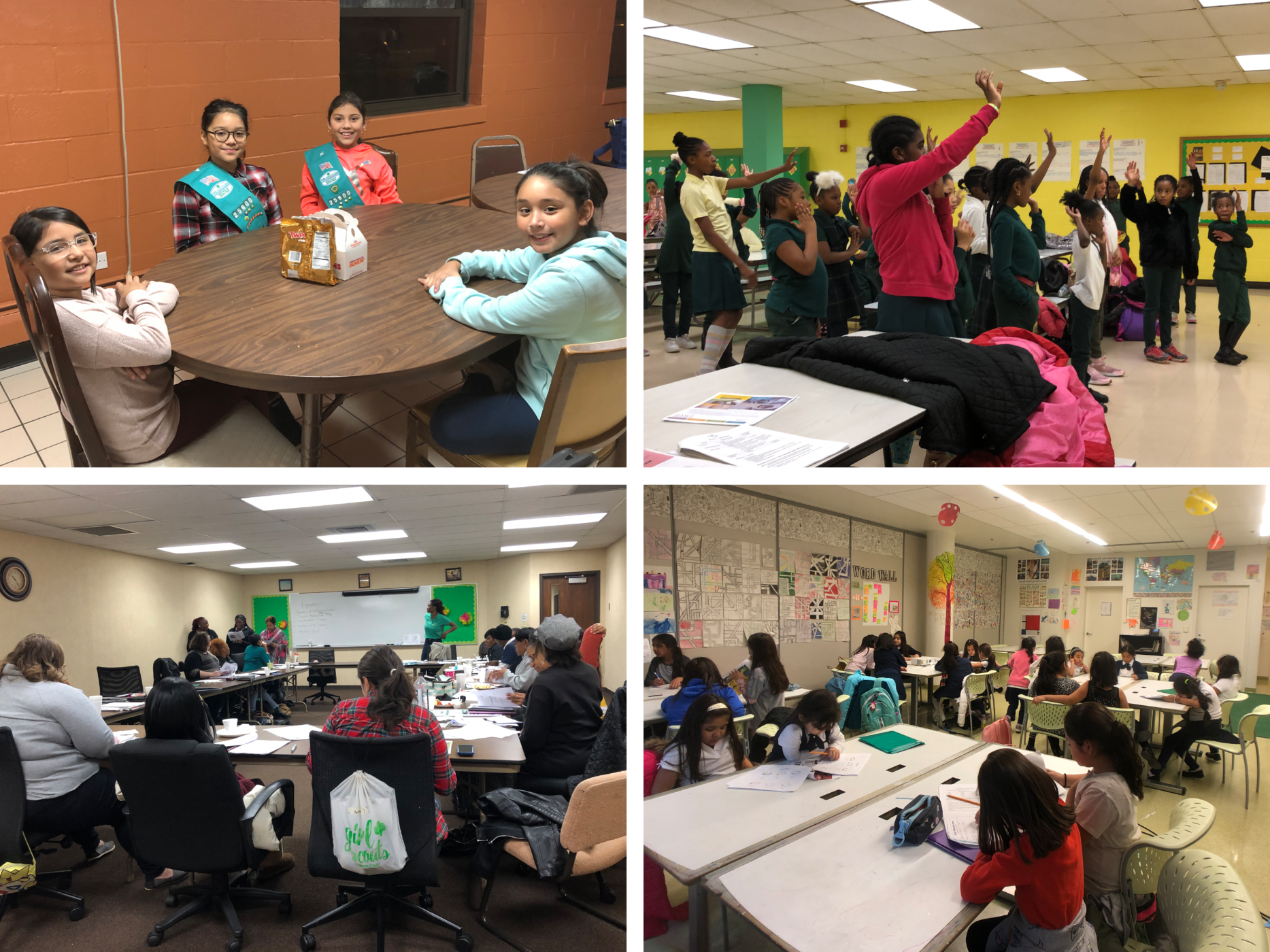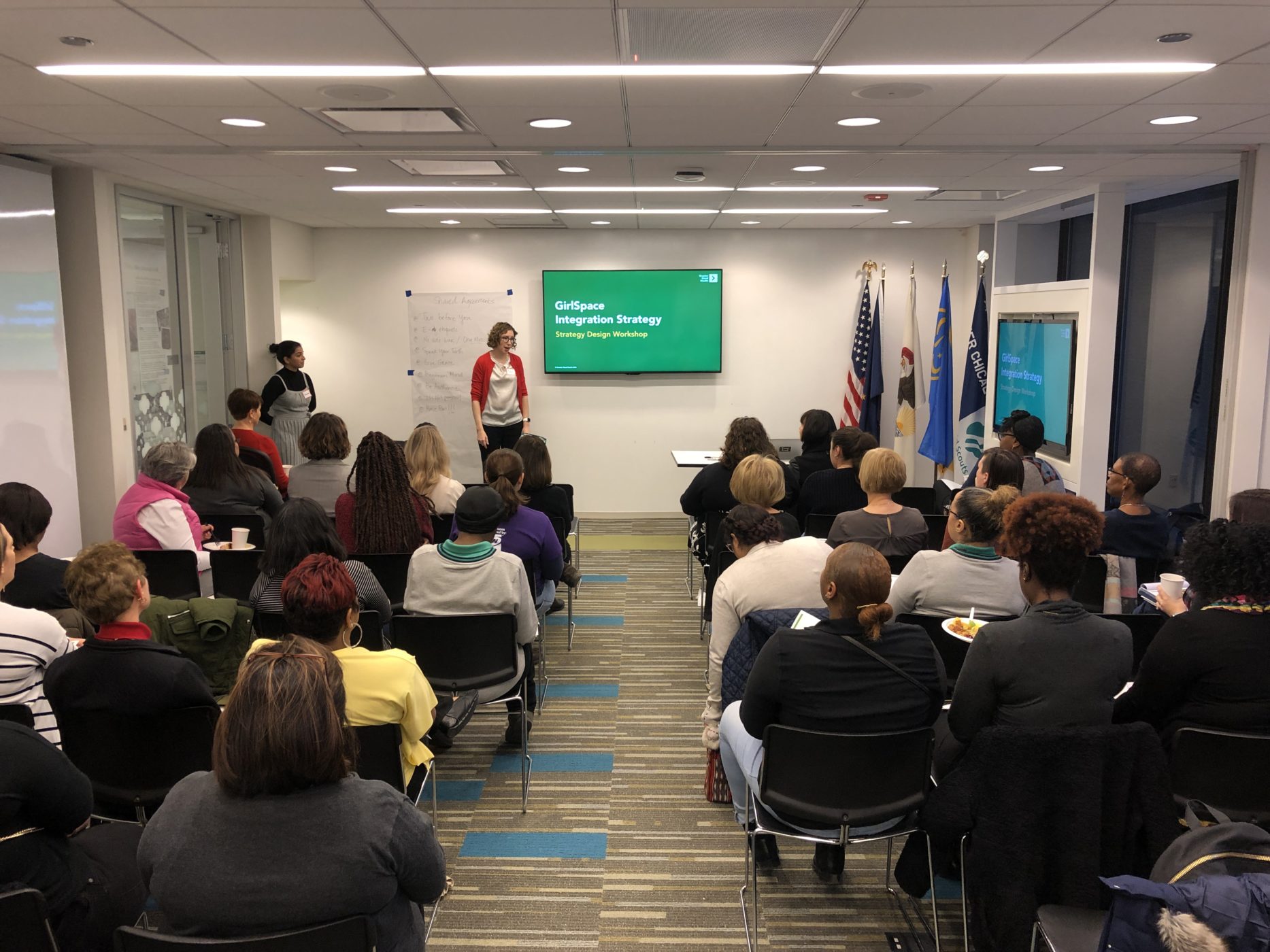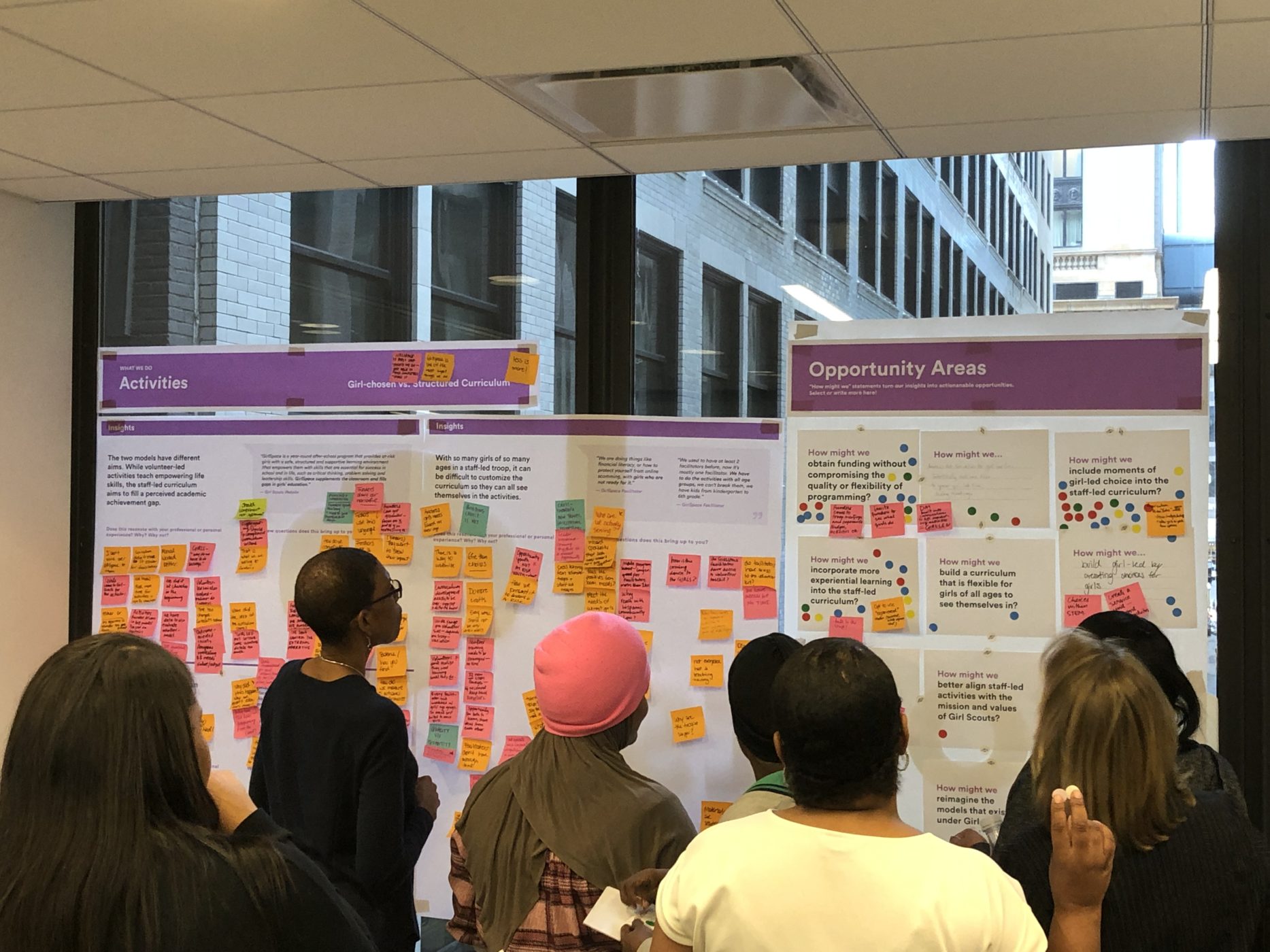
Client
An organization that is still standing strong after 100 years, Girl Scouts is a preeminent leadership development organization for girls. The Girl Scouts of Greater Chicago and Northwest Indiana is a regional chapter of Girl Scouts focused on leadership, adventure, and success.
Geography
Chicago, IL
Topic Area
Youth Development
Project Type
Programs & Services
Girl Scouts is a 100-year-old organization with a mission to inspire girls of courage, confidence, and character, who make the world a better place. Its traditional way of delivering curriculum and experiences to girls relies heavily on volunteers.
More than 20 years ago, recognizing the importance of creating equitable access to the Girl Scout experience, the Girl Scouts of Greater Chicago and Northwest Indiana launched “GirlSpace.” In contrast with traditional troops, the GirlSpace model depended on hiring local facilitators in communities with low volunteerism and economic inequity, many of which are also communities of color.
In 2019, the organization awakened to the importance of applying a racial equity lens to its programming, and this meant approaching all communities with intentionality. Both program models had strengths and challenges. Our opportunity was to identify the best of both models from a girl’s perspective, then co-create strategies to cross-pollinate, and ultimately better integrate, the two models together.
Project Outputs
Strategies
We created a strategic roadmap document including 27 high-level strategies covering categories such as Activities, Environment, Troop Leaders, Measuring Impact, and Identity. Each strategy also included specific tactics, presented as illustrated concepts, for the team to test and get feedback on. The roadmap not only helped the client prioritize strategies and ideas, but gave them an estimated timeframe for rollout and additional considerations and pitfalls to be mindful of during implementation.

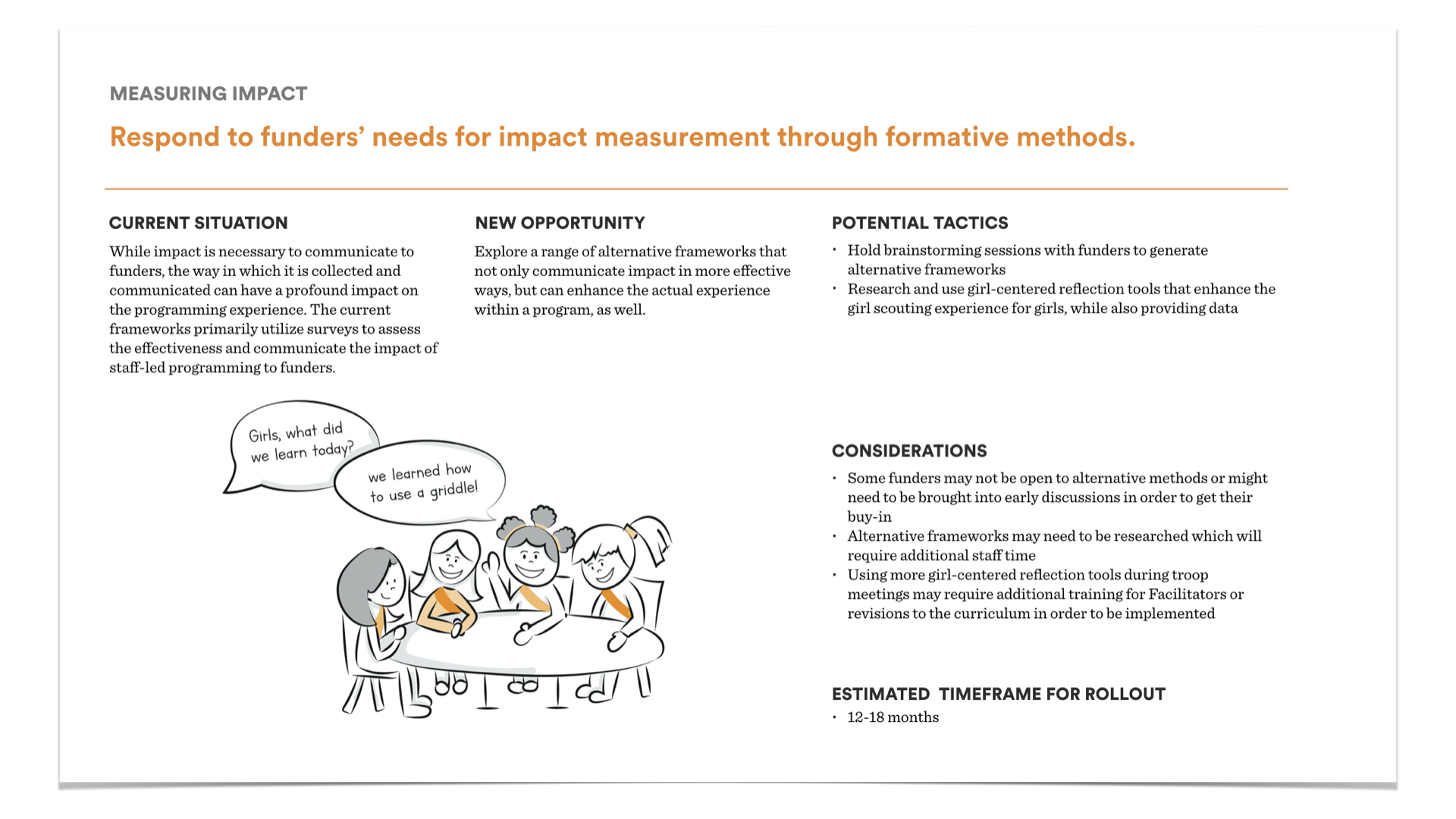
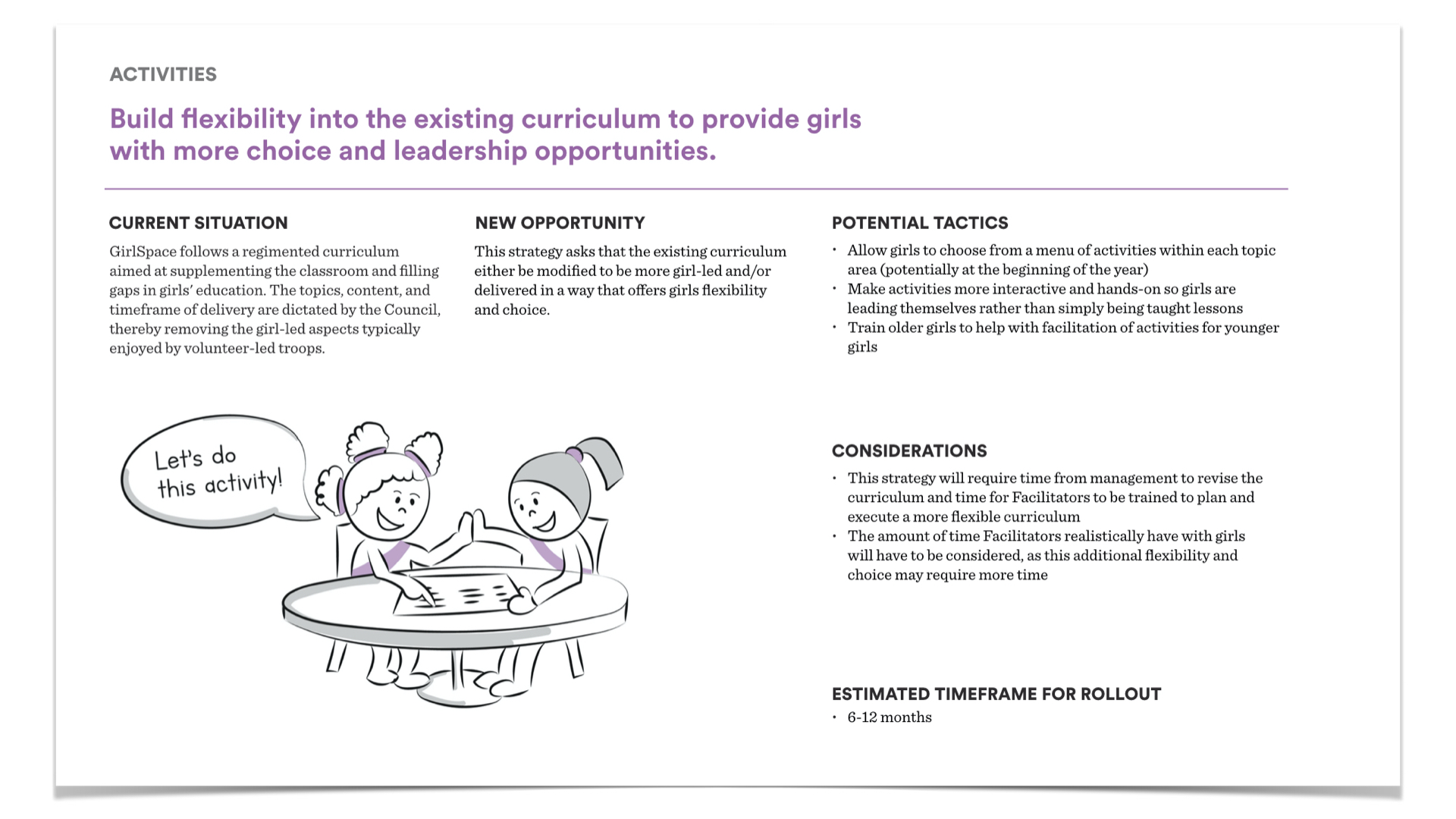
Client & Community Outcomes
Mindsets
This project brought to the forefront inequities that lay between the various models within the organization. Several staff members commented that they had never considered GirlSpace in this way before and felt much more aware and willing to continue reflection and dialogue. As our client put it, “There was a vortex of learning and unlearning that day.”
Conditions
The organization made some immediate plans to change staffing, including transitioning the part-time GirlSpace facilitator role into a full-time Youth Development Specialist position. They also made structural changes to the organization, including integrating the work of Community Engagement into one, larger Membership department.
Culture
For many staff members, this project provided an outlet through which they could candidly share their feedback. For some, the workshop was the first time they were able to authentically speak to peers and even leadership about their experiences. While the day resulted in tangible ideas, it also created a safe space for reflection and set the stage for future collaboration.

Everything that we designed together is coming to fruition. Every. Single. Thing.
Lesley Kennedy
Team & Studio Impact
This project has become a model for how we approach organizational change. Counterintuitively, what made it so effective was that we had a specific program upon which to focus. Rather than being tasked with a strategic plan or other company-wide initiative, our scope was to better understand, and potentially redesign, GirlSpace. This narrow focus allowed us to conduct observational research, and to therefore share tangible photos and specific quotes from within the context of the program. This level of intimacy with the ground-level realities of the work was illuminating and eye-opening for the majority of the organization, who did not actually work on this program. Of course, while our findings had implications for GirlSpace, they also had implications for areas like strategy, operations, development, and evaluation. We were able to substantiate our insights with patterns from other stakeholders, and inspire the organization to make major shifts to its model. In this way, a program-specific focus became a portal into broader organizational change.
